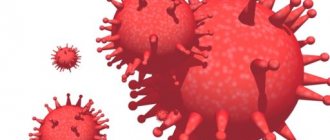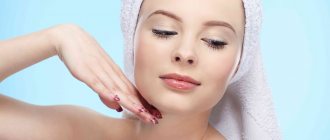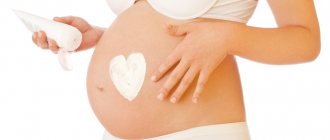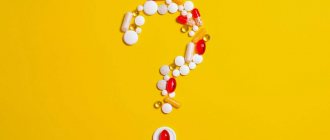Dry skin during pregnancy is quite common. During gestation, the female body experiences serious stress and stress, so all organs work differently. A pregnant woman's body is rebuilt, which affects her appearance, in particular the properties of her skin. It becomes dry and flaky. Most often this appears on the hands, but dryness is also observed on the face, neck, stomach, and legs.
Peeling skin on the hands during pregnancy: causes
It should be understood that the problem of excessive dry skin is primarily caused by pregnancy itself and is completely natural.
- Changes in hormonal balance
From the very beginning of pregnancy, the hormonal balance is disrupted:
- the level of the hormone progesterone increases, causing the skin to become sensitive, thin and less elastic;
- There is more estrogen hormone and the functioning of the sebaceous glands is disrupted, the secretion of sebum, which is necessary to nourish the skin, deteriorates.
These changes are inevitable, they occur in order for the mother’s body to accept the embryo, and if taken into account in advance, then with proper skin care it will be possible to prevent its excessive dryness.
- Lack of fluid
- Thyroid dysfunction
- Allergic reaction
- Unbalanced diet
- Stressful state
From a certain stage of pregnancy (second trimester), the usual volume of water consumed by a pregnant woman becomes insufficient. This is explained by an increase in the total blood volume, the formation of amniotic fluid and new tissues and organs of the unborn baby.
This takes up most of the liquid, and there simply isn’t enough of it to moisturize mommy’s skin.
A common disease for expectant mothers, hypothyroidism is caused by a lack of hormones produced by the thyroid gland and is often manifested by brittle hair, nails and peeling skin on the hands during pregnancy.
The reason often affects the skin of the hands. This is due to the fact that the hands receive the most external influence, and it is more difficult to protect them: sun rays, chemical household products, frequent washing - all this adds to the increased sensitivity of the skin and leads to peeling and dry skin of the hands during pregnancy.
Insufficient intake of vitamins and microelements often affects the condition of the skin. Especially during pregnancy, when you need to eat for two. Vitamins A, E, B are responsible for moisturizing the skin.
Against the backdrop of anxiety, a pregnant woman may experience irritation with itching and peeling of her hands. This is due to the increased sensitivity of the skin during this period, and, as a result, with an immediate reaction to any internal experiences.
How to deal with stretch marks
Is it possible to prevent stretch marks during pregnancy? Dermatologists say that genetic predisposition plays a key role here, and about half of women observe the appearance of stretch marks while expecting a child - on the stomach, chest, buttocks and thighs. Even special creams against the appearance of stretch marks will not protect against them. If women in your family have them on the skin, then you are not immune from their appearance. Here are the factors that can increase the likelihood of stretch marks:
- multiple pregnancy;
- rapid weight gain;
- you are carrying a large baby;
- you have excess amniotic fluid.
Dermatologists still recommend preventive measures:
- taking a contrast shower with simultaneous massage with a hard washcloth, you can use scrubs;
- daily moisturizing of the skin with vegetable oil, milk or body cream.
You can also smear the oil on the expectant mother’s tummy, but no one can guarantee that there will be no stretch marks. Don’t get hung up on this: if they appear, their manifestations can be reduced.
The skin on the hands cracks during pregnancy: what is the danger?
In fact, there is nothing wrong with dry skin – especially when the problem is not accompanied by any other symptoms. However, peeling hands during pregnancy and itchy skin cause the expectant mother a lot of unpleasant sensations. And if they are not eliminated in a timely manner, the situation may worsen: dry skin on the hands will crack, water will constantly get into the micro-wounds when washing hands, an infection may even develop, and inflammation will begin. All this is extremely unpleasant and already dangerous.
Therefore, it is important to properly care for your skin during pregnancy and be sure to report the problem to your doctor during a routine examination. If necessary, he will prescribe tests and refer you to a specialized specialist.
Should you report your symptoms to your doctor?
Any change in condition during pregnancy should not be overlooked. It is imperative to inform your doctor about dry skin, despite the fact that this is a common occurrence for a pregnant woman. He will identify the cause and prescribe methods to eliminate it, which may include:
- change in the amount of fluid consumed;
- nutrition correction;
- taking vitamin complexes;
- use of special creams and other cosmetics.
Dryness is caused not only by the listed reasons, but also by some diseases or allergic reactions. The doctor must conduct an examination to promptly detect and eliminate them. A missed allergy can be passed on to the child.
What to do when the skin on your hands dries during pregnancy
Your hand skin will be less dry if:
Body care
First of all, pregnancy and cosmetics are not mutually exclusive concepts; it’s just that while you’re expecting a baby, it’s better to give preference to natural and hypoallergenic products. Now there are quite a few brands to suit a variety of budgets with lines of care products for pregnant women.
If you don't trust them, you can try using homemade recipes based on natural ingredients. Olive oil, coconut oil, wheat germ oil and almond oil perfectly moisturize the body and help fight against stretch marks. To improve the condition of your body skin, you can use a sugar or salt scrub once or twice a week: simply apply fine salt in a circular motion to damp skin, and then rinse with water.
Experts' opinion
The conducted clinical study proves the high efficiency, safety and tolerability of the product for daily skin care of children with mild and moderate forms of atopic dermatitis and during remission, accompanied by a decrease in the quality of life of patients. As a result of therapy, a decrease in the activity of the inflammatory process, a decrease in dryness, itching and flaking was noted.
Researchers from the Vertex company have proven that as a result of using La-Cri cream for sensitive skin, itching and irritation are significantly reduced, and redness goes away. The cream carefully cares for the skin and perfectly moisturizes it.
Based on the results of a clinical study, the information “Recommended by the St. Petersburg Branch of the Union of Pediatricians of Russia” is placed on product packaging.
Sources:
- I.I. Ryumina, V.V. Zubkov, Newborn skin care, Healthy Child magazine, 2017
- Habiff Thomas P., Clinical Dermatology. Acne-like and papulosquamous dermatoses, publishing house: MEDpress-inform, 2014
- Churolinov Petr, Herbal medicine in dermatology and cosmetics, Medicine and Physical Education Publishing House, 1979
Photos of eczema
Photo album on the disease
Nail care
Manicure and pedicure are an important part of personal care. But frequent inhalation of nail polish and nail polish remover fumes is far from beneficial, especially if you're sitting in a crowded or poorly ventilated salon area. You can be content with a home manicure and pedicure, including various softening and strengthening baths, correction of nail plates, and polishing. And to paint your nails, it is better to choose varnishes without toluene, dibutyl phthalate and formaldehyde. Nail polish remover should be soy or water based, without acetone.
Sources
- Ross-Davie M., Brodrick A., Randall W., Kerrigan A., McSherry M. 2. Labor and birth. // Best Pract Res Clin Obstet Gynaecol - 2021 - Vol - NNULL - p.; PMID:33879365
- Sabharwal V., Bartolome R., Hassan SA., Levesque BM., Camelo IY., Wachman EM., Figueira M., Yarrington CD., Cooper ER., Barnett ED., Parker MG. Mother-Infant Dyads with COVID-19 at an Urban, Safety-Net Hospital: Clinical Manifestations and Birth Outcomes. // Am J Perinatol - 2022 - Vol - NNULL - p.; PMID:33853145
- Yu Y., Zhang Y., Zhu X., Zhang C., Tong C., Zhao Y. . // Zhonghua Wei Zhong Bing Ji Jiu Yi Xue - 2022 - Vol33 - N3 - p.305-310; PMID:33834971
- Bezemer JM., van der Ende J., Limpens J., de Vries HJC., Schallig HDFH. Safety and efficacy of allylamines in the treatment of cutaneous and mucocutaneous leishmaniasis: A systematic review. // PLoS One - 2022 - Vol16 - N4 - p.e0249628; PMID:33826660
- Elango K., Javaid A., Khetarpal B.K., Ramalingam S., Kolandaivel K.P., Gunasekaran K., Ahsan C. The Effects of Warfarin and Direct Oral Anticoagulants on Systemic Vascular Calcification: A Review. // Cells - 2022 - Vol10 - N4 - p.; PMID:33807457
- Foessleitner P., Kiss H., Deinsberger J., Ott J., Zierhut L., Farr A. Validation of the SavvyCheck™ Vaginal Yeast Test for Screening Pregnant Women for Vulvovaginal Candidosis: A Prospective, Cross-Sectional Study. // J Fungi (Basel) - 2022 - Vol7 - N3 - p.; PMID:33804805
- Gonçalves-Ferri WA., Pereira-Cellini FM., Coca K., Aragon DC., Nader P., Lyra JC., do Vale MS., Marba S., Araujo K., Dias LA., de Lima Mota Ferreira DM ., Nieto G., Anchieta LM., de Cássia Silveira R., de Moura MDR., Tuma Calil VML., Moraes VCC., de Almeida JHCL., Magalhães M., Sonini TCB., Javorsky JB., Ribeiro ÉLA. , Ferreira R., de Almeida LDC., Garbers R., da Silva Faria GM., Roosch A., de Mesquita ARA., de Oliveira Pinto RM. The impact of coronavirus outbreak on breastfeeding guidelines among Brazilian hospitals and maternity services: a cross-sectional study. // Int Breastfeed J - 2021 - Vol16 - N1 - p.30; PMID:33789708
- Gurung R., Ruysen H., Sunny AK., Day LT., Penn-Kekana L., Målqvist M., Ghimire B., Singh D., Basnet O., Sharma S., Shaver T., Moran AC., Lawn JE., Kc A. Respectful maternal and newborn care: measurement in one EN-BIRTH study hospital in Nepal. // BMC Pregnancy Childbirth - 2022 - Vol21 - NSuppl 1 - p.228; PMID:33765971
- Ameen S., Siddique AB., Peven K., Rahman QS., Day LT., Shabani J., Kc A., Boggs D., Shamba D., Tahsina T., Rahman AE., Zaman SB., Hossain AT ., Ahmed A., Basnet O., Malla H., Ruysen H., Blencowe H., Arnold F., Requejo J., Arifeen SE., Lawn JE., Rahman QS., Rahman AE., Tahsina T., Zaman SB., Ameen S., Hossain T., Siddique AB., Hossain AT., Mazumder T., Khan J., Talha TUS., Haider R., Rahman MH., Ahmed A., El Arifeen S., Basnet O., Sunny AK., Thakur N., Gurung R., Jha AK., Jha B., Bastola RC., Paudel R., Paudel A., Kc A., Salim N., Shamba D., Shabani J. , Shirima K., Tarimo MN., Mbaruku G., Masanja H., Day LT., Ruysen H., Peven K., Gordeev VS., Gore-Langton GR., Boggs D., Kong S., Baschieri A. , Cousens S., Lawn JE. Survey of women's report for 33 maternal and newborn indicators: EN-BIRTH multi-country validation study. // BMC Pregnancy Childbirth - 2022 - Vol21 - NSuppl 1 - p.238; PMID:33765956








